Five Best Martial Art Styles for Effective Self-Defense Techniques
This article explores the top martial art styles that provide practical self-defense techniques, emphasizing their unique benefits, training methods, and effectiveness in real-life situations. In a world where personal safety is paramount, understanding various self-defense techniques can empower individuals to protect themselves effectively. Whether you're a seasoned martial artist or a curious beginner, this guide will introduce you to five of the best martial art styles that not only teach self-defense but also build confidence and resilience.
Krav Maga is renowned for its focus on real-world situations, teaching practitioners how to defend against various attacks quickly and efficiently. This style emphasizes instinctive movements and practical techniques, making it accessible to everyone, regardless of physical fitness or experience level. Imagine being in a situation where every second counts; Krav Maga equips you with the skills to react swiftly and decisively, turning the tables on an attacker.
Brazilian Jiu-Jitsu (BJJ) specializes in ground fighting and submission grappling. It empowers smaller individuals to defend against larger attackers by utilizing leverage and technique, making it an effective self-defense choice. The beauty of BJJ lies in its ability to level the playing field; through technique and strategy, even someone of modest size can successfully defend themselves against a bigger opponent. This martial art isn't just about strength; it's about using your opponent's energy against them, much like a skilled chess player anticipating their opponent's moves.
Understanding ground defense is crucial in self-defense scenarios. Brazilian Jiu-Jitsu teaches practitioners how to control opponents on the ground, minimizing the risk of injury and maximizing escape opportunities. In many real-life confrontations, the fight may end up on the ground, and knowing how to navigate this environment is essential. BJJ practitioners learn to maintain a dominant position, ensuring they can escape or neutralize threats effectively.
BJJ provides various techniques for escaping holds and submissions, enabling practitioners to regain control. Learning these techniques enhances confidence and self-defense effectiveness in grappling situations. Imagine being caught in a hold; with the right techniques, you can turn vulnerability into an opportunity for escape, transforming fear into empowerment.
BJJ also offers strategies for defending against multiple attackers, focusing on movement and positioning to avoid being overwhelmed, which is essential for real-world confrontations. The principles of BJJ teach practitioners to stay mobile, using angles and distance to evade threats, much like a skilled dancer navigating a crowded stage.
Sparring is a fundamental aspect of Brazilian Jiu-Jitsu training, allowing practitioners to apply techniques in realistic scenarios. This practice enhances reflexes and decision-making under pressure. Just like a fire drill prepares you for an emergency, sparring prepares you for the unpredictability of real-life confrontations, sharpening your instincts and enhancing your ability to think on your feet.
Muay Thai, known as the Art of Eight Limbs, utilizes punches, kicks, elbows, and knees. Its striking techniques are effective for self-defense, providing practitioners with powerful tools for defending themselves. In a world where physical confrontation can be unpredictable, the versatility of Muay Thai strikes ensures that you have multiple options at your disposal. Imagine being able to defend yourself using every part of your body; that’s what Muay Thai offers.
Muay Thai's striking techniques are designed for effectiveness in real-life confrontations. Practitioners learn to deliver powerful strikes while maintaining balance and control, essential for self-defense. The training emphasizes not just the ability to hit hard, but to do so with precision and timing, making your strikes not just powerful, but also effective.
Training in Muay Thai enhances physical conditioning and endurance, preparing practitioners for the demands of self-defense situations. This physical readiness is crucial for maintaining composure during confrontations. Think of it as building your body into a fortress; the stronger and more conditioned you are, the better equipped you are to face any challenge that comes your way.
Judo focuses on throws, joint locks, and pins, making it an effective martial art for self-defense. It teaches practitioners to use an opponent's force against them, ideal for defending against larger attackers. Judo emphasizes the principle of maximum efficiency, minimum effort, allowing individuals to neutralize threats without relying solely on brute strength.
Judo's throwing techniques allow practitioners to neutralize threats quickly. Learning to execute throws effectively can turn the tide in a self-defense scenario, providing an advantage over aggressors. Imagine being able to take down an opponent with a single, well-timed move; that’s the power of Judo.
Judo also emphasizes joint locks and control techniques, enabling practitioners to subdue opponents without causing excessive harm, making it a practical choice for self-defense. This focus on control ensures that practitioners can handle situations with a level of restraint, which is particularly important in self-defense scenarios where the goal is to escape rather than to inflict harm.
Karate combines striking techniques with self-discipline and mental focus. Its diverse techniques, including punches, kicks, and blocks, equip practitioners with valuable skills for self-defense in various situations. Karate training instills a sense of discipline that extends beyond the dojo, fostering a mindset of respect and self-control.
Kata, or pre-arranged forms, play a significant role in Karate training. Practicing kata enhances muscle memory and technique precision, contributing to effective self-defense capabilities. Think of kata as a rehearsal for a performance; it prepares you for the real thing, ensuring that when the moment comes, you know exactly what to do.
Karate training fosters mental discipline and focus, essential qualities for self-defense. Practitioners learn to remain calm under pressure, improving their ability to assess and respond to threats effectively. This mental fortitude is as important as physical skills; it’s the difference between reacting impulsively and responding wisely.
- What is the best martial art for self-defense? Each martial art has its strengths, but Krav Maga is often recommended for its practical approach to self-defense in real-world scenarios.
- Can anyone learn martial arts? Absolutely! Martial arts are designed for individuals of all ages and fitness levels, making them accessible to everyone.
- How long does it take to become proficient in a martial art? Proficiency varies by individual and the style practiced, but consistent training over months to years can lead to significant improvement.
- Is sparring necessary for self-defense training? Yes, sparring helps develop reflexes and decision-making skills under pressure, which are crucial in real-life confrontations.
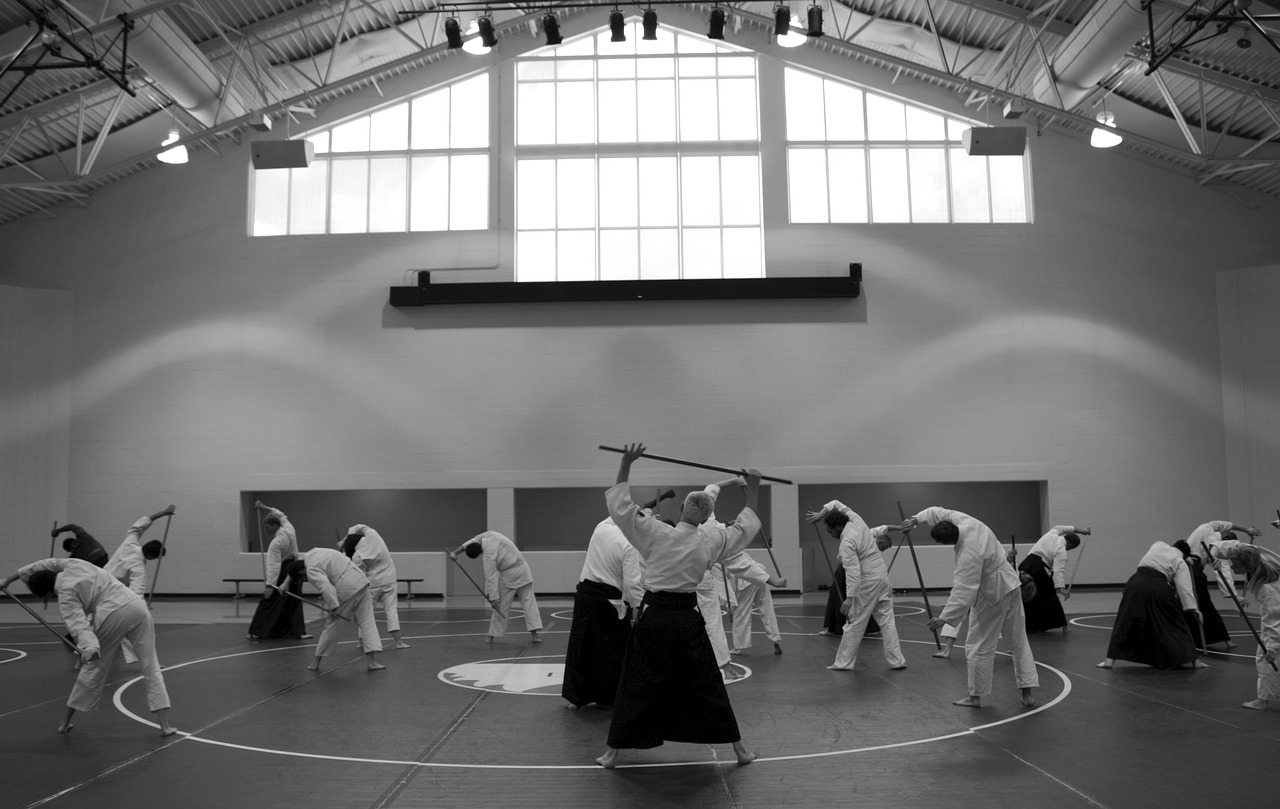
1. Krav Maga
This article explores the top martial art styles that provide practical self-defense techniques, emphasizing their unique benefits, training methods, and effectiveness in real-life situations.
Krav Maga is not just a martial art; it's a life-saving skill that prepares individuals to face dangerous situations head-on. Developed by the Israeli Defense Forces, this system is renowned for its focus on real-world scenarios, teaching practitioners how to defend against various attacks quickly and efficiently. What sets Krav Maga apart is its emphasis on instinctive movements and practical techniques that anyone can learn, regardless of their physical condition or previous experience in martial arts.
The training in Krav Maga is intense and realistic, often simulating actual attack scenarios. This approach helps build not only physical skills but also the mental toughness needed to handle high-pressure situations. Practitioners learn to react swiftly and effectively to threats, which can range from unarmed assaults to armed confrontations. The core philosophy of Krav Maga is to neutralize threats as quickly as possible, often by targeting the attacker's vulnerable areas. For instance, practitioners are trained to strike the eyes, throat, and groin to incapacitate an opponent, making it a highly effective self-defense method.
Moreover, Krav Maga emphasizes the importance of situational awareness. Being aware of your surroundings can be the difference between avoiding a confrontation and being caught off guard. Training includes techniques to recognize potential threats and escape dangerous situations before they escalate. This aspect of Krav Maga can be likened to having a sixth sense, allowing practitioners to navigate their environments with confidence and caution.
In addition to physical techniques, Krav Maga also focuses on self-defense psychology. Understanding the mental and emotional aspects of self-defense is crucial. Practitioners learn how to manage fear and anxiety during an attack, which is essential for effective decision-making. The training instills a sense of empowerment and confidence, encouraging individuals to stand their ground and defend themselves when necessary.
For those considering Krav Maga, it’s worth noting that the training is suitable for people of all ages and fitness levels. Whether you are a teenager looking to boost your self-confidence or an adult seeking to improve your personal safety, Krav Maga offers something for everyone. The community aspect of Krav Maga classes also fosters a supportive environment where individuals can grow and learn together.
| Key Benefits of Krav Maga | Description |
|---|---|
| Realistic Training | Simulates real-life scenarios to prepare practitioners for actual threats. |
| Self-Defense Techniques | Focuses on practical and instinctive movements to neutralize threats quickly. |
| Situational Awareness | Teaches practitioners to be aware of their surroundings and recognize potential threats. |
| Empowerment | Builds confidence and mental resilience, helping individuals manage fear during confrontations. |
In conclusion, Krav Maga is a powerful self-defense system that equips individuals with the skills and mindset needed to protect themselves in various situations. Its focus on real-world applications, combined with a supportive training environment, makes it an excellent choice for anyone interested in enhancing their personal safety.
- Is Krav Maga suitable for beginners? Yes, Krav Maga is designed for individuals of all skill levels, including beginners.
- How long does it take to become proficient in Krav Maga? Proficiency can vary, but many practitioners notice significant improvement within a few months of consistent training.
- Do I need to be in shape to start Krav Maga? No, Krav Maga training can accommodate all fitness levels, and you will improve your fitness over time.
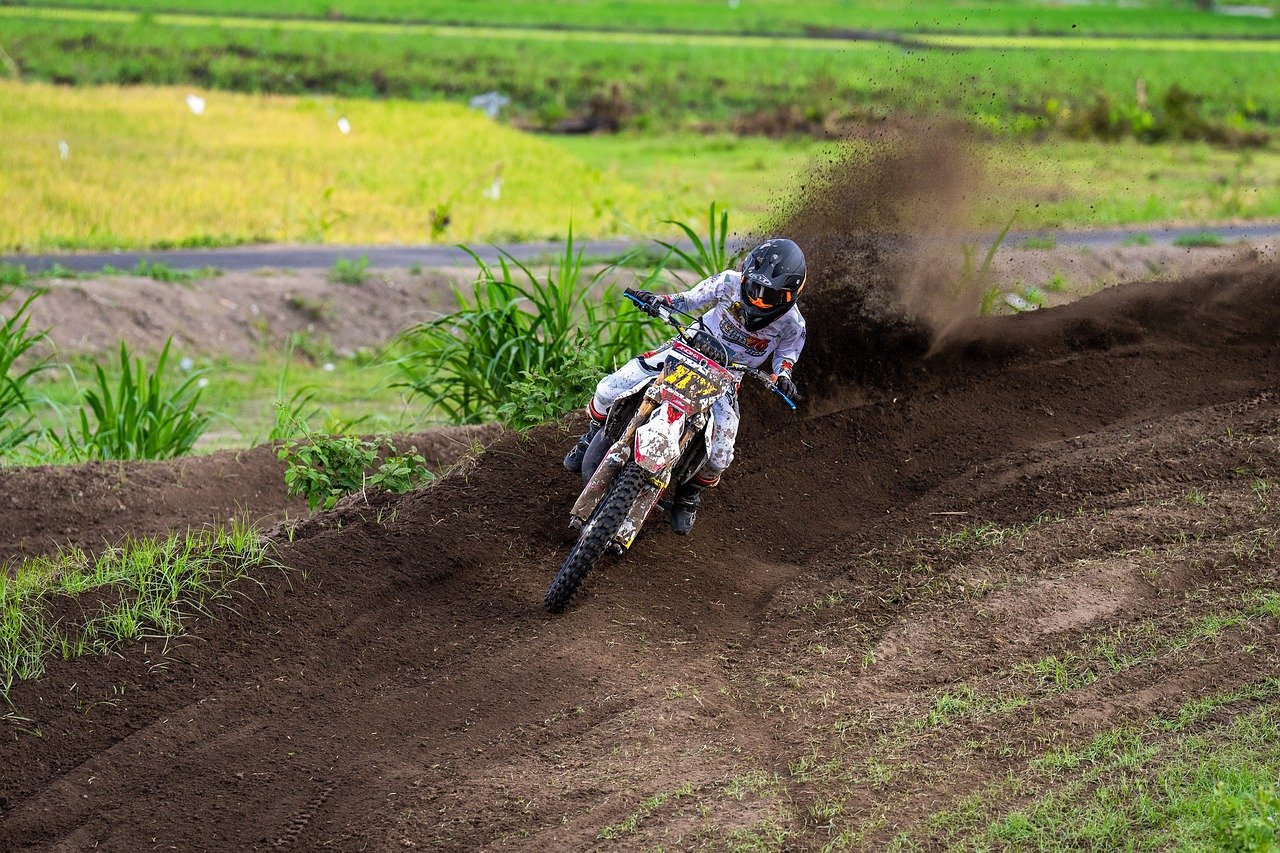
2. Brazilian Jiu-Jitsu
Brazilian Jiu-Jitsu (BJJ) is not just a martial art; it's a philosophy that empowers individuals, especially those who may feel vulnerable in confrontation. Imagine being able to take down an opponent who is significantly larger than you, all through the power of technique and leverage. This art focuses on ground fighting and submission grappling, making it a compelling choice for self-defense. The beauty of BJJ lies in its ability to level the playing field, allowing practitioners to defend themselves effectively, regardless of their size or strength.
One of the most appealing aspects of BJJ is its emphasis on real-life application. In a world where street confrontations can happen unexpectedly, the ability to defend oneself on the ground is invaluable. As practitioners learn to control opponents, they not only enhance their self-defense skills but also build confidence. The training involves a variety of techniques that are practical and instinctive, ensuring that when the moment arises, individuals can react appropriately.
Understanding ground defense is crucial in self-defense scenarios. Most altercations can end up on the ground, and Brazilian Jiu-Jitsu teaches practitioners how to maintain control in these situations. The art focuses on minimizing the risk of injury while maximizing escape opportunities. This is especially important because during a confrontation, the ability to get away safely is often the primary goal. By employing techniques that allow for quick escapes and reversals, BJJ practitioners can navigate dangerous situations with greater ease.
BJJ provides a plethora of techniques for escaping holds and submissions, which is essential for regaining control during a confrontation. For instance, techniques such as the bridge and roll or the hip escape are fundamental skills that every practitioner learns. These techniques not only enhance one’s ability to escape but also build a strong foundation for further learning in the art. The confidence gained from mastering these skills can be truly transformative, equipping individuals with the mindset necessary for self-defense.
In real-world confrontations, you might not always face just one attacker. BJJ offers strategies for defending against multiple assailants, focusing on movement and positioning to avoid being overwhelmed. Practitioners learn to use their environment to their advantage, whether it’s by creating distance or finding escape routes. This aspect of training is crucial, as it prepares individuals for the unpredictability of street encounters, reinforcing the idea that awareness and strategy can often be just as important as physical skill.
Sparring is a fundamental aspect of Brazilian Jiu-Jitsu training. It’s where theory meets practice, allowing practitioners to apply techniques in realistic scenarios. During sparring sessions, individuals face off against training partners, which helps to enhance reflexes and decision-making under pressure. This live practice is where the magic happens; it’s not just about learning moves but about understanding timing, distance, and the unpredictability of an opponent’s actions. The experience gained through sparring is invaluable, as it builds resilience and adaptability—two key traits needed in any self-defense situation.
In conclusion, Brazilian Jiu-Jitsu stands out as an exceptional martial art for self-defense. Its focus on technique over brute strength, combined with practical training methods, makes it a top choice for anyone looking to enhance their self-defense skills. Whether you are a beginner or an experienced martial artist, the lessons learned through BJJ can empower you to face challenges with confidence and skill.
- What is Brazilian Jiu-Jitsu? - BJJ is a martial art focused on ground fighting and submission grappling, emphasizing technique and leverage over strength.
- Is BJJ effective for self-defense? - Yes, BJJ is highly effective for self-defense, especially in situations that go to the ground.
- Can anyone learn BJJ? - Absolutely! BJJ is suitable for individuals of all ages and fitness levels.
- How long does it take to become proficient in BJJ? - Proficiency varies, but consistent training can lead to significant improvements within a few months.

2.1. The Importance of Ground Defense
When it comes to self-defense, many people often overlook the significance of ground defense. In real-life confrontations, the fight can easily end up on the ground, and knowing how to navigate this terrain is crucial. Brazilian Jiu-Jitsu (BJJ) shines in this aspect, as it equips practitioners with the necessary skills to manage ground situations effectively. Imagine being caught in a scuffle; if you don’t know how to defend yourself on the ground, you might find yourself at a serious disadvantage. This is where BJJ comes into play, offering techniques that allow individuals to control their opponents and escape from potentially harmful situations.
Ground defense is not just about fighting back; it’s about minimizing risk and maximizing your chances of escaping unscathed. Here are some key elements that highlight the importance of ground defense:
- Control: BJJ teaches practitioners how to maintain control over their opponents, keeping them in check while looking for opportunities to escape.
- Leverage: Smaller individuals can effectively defend themselves against larger attackers by utilizing leverage, turning the tables in their favor.
- Escaping Techniques: Knowing how to escape holds and submissions can mean the difference between safety and injury.
Moreover, understanding ground defense is essential for avoiding escalation in a confrontation. If you can control the situation on the ground, you can often de-escalate the conflict without needing to resort to further violence. This is particularly important because self-defense is not just about fighting back; it’s about ensuring your safety while minimizing harm to others.
In conclusion, the importance of ground defense cannot be overstated. Whether you find yourself on the ground due to an unexpected attack or a slip during a confrontation, having the skills to defend yourself can make all the difference. Brazilian Jiu-Jitsu provides those essential tools, empowering individuals to face real-world situations with confidence and effectiveness.

2.1.1. Techniques for Escaping Holds
When it comes to self-defense, knowing how to escape from various holds can be a game changer. Brazilian Jiu-Jitsu (BJJ) offers a plethora of techniques designed to help practitioners break free from an opponent's grip, ensuring they can regain control and avoid further danger. These techniques are not just about brute strength; they rely heavily on leverage, timing, and understanding body mechanics. Here are some key techniques that every BJJ practitioner should master:
- Hip Escape (Shrimping): This fundamental movement allows you to create space between you and your opponent. By shifting your hips away while pushing against their body, you can effectively slide out of holds.
- Bridge and Roll: When pinned, using the bridge and roll technique can help you flip your opponent off you. This move not only frees you but also places you in a more advantageous position.
- Guard Recovery: If you find yourself on the ground, transitioning back to a guard position can give you the leverage needed to escape. This technique emphasizes using your legs to control and push away your opponent.
Each of these techniques plays a vital role in enhancing your ability to escape holds. For instance, the hip escape is often the first step in many defensive scenarios. It’s like a magician’s sleight of hand, allowing you to slip away unnoticed. Similarly, the bridge and roll is akin to a rollercoaster ride—once you initiate the motion, you’ll find yourself flipping into a better position, often surprising your opponent.
Moreover, practicing these techniques during sparring sessions helps to solidify your understanding and execution under pressure. It’s one thing to learn a move in a calm environment, but applying it when adrenaline is pumping is where the real learning happens. This practice not only builds muscle memory but also boosts your confidence in real-life situations.
In summary, mastering the techniques for escaping holds in BJJ is essential for effective self-defense. By focusing on leverage and body mechanics, you can turn the tables on an aggressor, transforming a potentially dangerous situation into an opportunity for escape. Remember, the goal is not just to defend but to regain control and ensure your safety.
Q: How long does it take to learn these techniques?
A: The time it takes to learn varies by individual, but consistent practice and training can lead to proficiency within a few months.
Q: Are these techniques effective for everyone?
A: Yes, while size and strength matter, BJJ techniques are designed to leverage technique over brute force, making them effective for practitioners of all sizes.
Q: Can I practice these techniques safely?
A: Absolutely! Training with a qualified instructor and using proper safety gear can help minimize the risk of injury while practicing these techniques.
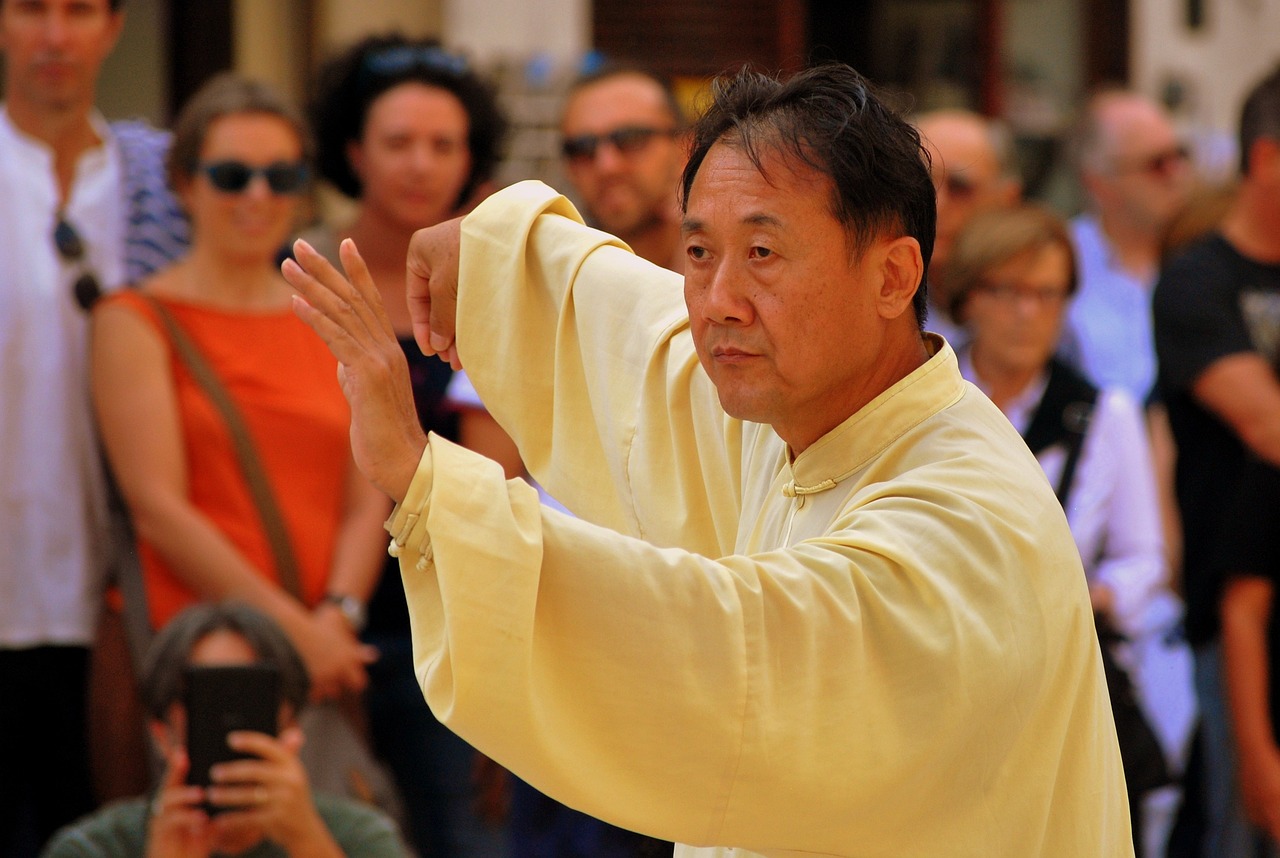
2.1.2. Self-Defense Against Multiple Attackers
When it comes to self-defense, facing multiple attackers can be an incredibly daunting situation. Brazilian Jiu-Jitsu (BJJ) equips practitioners with essential strategies to handle such encounters effectively. The key lies in understanding movement, positioning, and timing. Instead of panicking or trying to engage multiple aggressors directly, BJJ teaches you to stay mobile and utilize your environment.
One of the most effective tactics is to keep your back to a wall or other solid structure, which limits the number of attackers who can approach you at once. This positioning allows you to focus on one opponent while keeping the others at bay. Additionally, using footwork to create distance can help you evade attacks and find openings for counter-strikes or escapes.
Moreover, BJJ emphasizes the importance of timing. Knowing when to engage and when to evade is crucial in a multi-attacker scenario. Practitioners learn to recognize the rhythm of their opponents' movements, which can provide opportunities to exploit weaknesses. For instance, if one attacker lunges forward, this can create an opening to sidestep and take control of another attacker.
Another vital aspect of self-defense against multiple attackers is the ability to stay calm under pressure. Panic can lead to poor decision-making, so BJJ training focuses on developing mental resilience. Practitioners often engage in sparring sessions that simulate chaotic environments, helping them build the confidence needed to remain composed during real-life confrontations.
In summary, while self-defense against multiple attackers is undoubtedly challenging, Brazilian Jiu-Jitsu provides the tools and techniques necessary to navigate such situations effectively. By focusing on movement, positioning, and mental discipline, practitioners can enhance their chances of escaping safely.
- What should I do if I am confronted by multiple attackers?
Stay calm, assess the situation, and look for ways to escape. Use your environment to your advantage and focus on evading rather than engaging all at once.
- Can BJJ really help in a multiple attacker scenario?
Yes, BJJ teaches effective movement and positioning strategies that can help you control the situation and escape safely.
- How can I practice for such situations?
Engage in sparring sessions that simulate multiple attackers, and work on drills that focus on movement and evasion techniques.
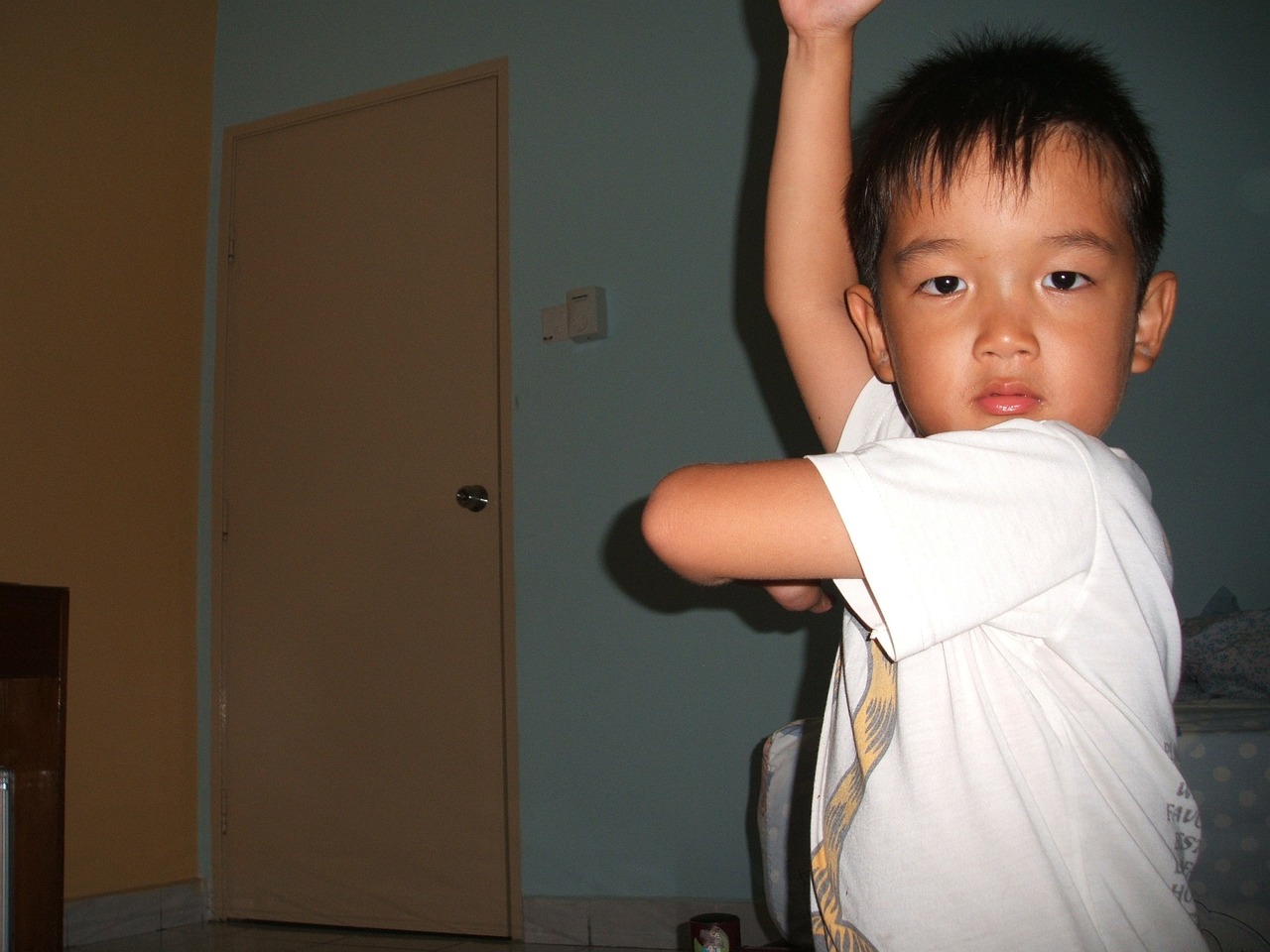
2.2. The Role of Sparring in BJJ
Sparring is a critical component of Brazilian Jiu-Jitsu (BJJ) training, often regarded as the bridge between theoretical knowledge and practical application. During sparring sessions, practitioners engage in live drills against resisting opponents, which allows them to test their skills in a realistic environment. This hands-on experience is invaluable, as it not only reinforces the techniques learned in class but also helps in developing a deeper understanding of timing, distance, and strategy.
One of the most significant benefits of sparring is that it enhances a practitioner’s reflexes. When faced with a live opponent, the body instinctively reacts to attacks and defenses, honing muscle memory and quickening reaction times. This is akin to a musician practicing scales; the more one practices, the more natural the movements become. In BJJ, this translates to improved performance during actual self-defense scenarios, where split-second decisions can make all the difference.
Moreover, sparring offers an opportunity for practitioners to experience various styles and techniques in action. Each sparring partner brings their unique approach, which can challenge the individual and expose them to different strategies. This diversity in experience is crucial, as it prepares practitioners for the unpredictability of real-life confrontations. Just like a chess player facing different opponents, a BJJ practitioner learns to adapt and evolve their game, making them more versatile and effective.
Additionally, sparring fosters a sense of camaraderie among practitioners. It builds trust and respect, as both partners understand that they are there to learn and improve together. This supportive environment encourages individuals to push their limits while ensuring safety, making it an essential part of the BJJ culture. Sparring is not just about competition; it's about growth, learning, and mutual improvement.
In conclusion, sparring in Brazilian Jiu-Jitsu is more than just a training tool; it's a vital aspect that enhances skills, builds confidence, and prepares practitioners for real-world self-defense situations. Whether you are a beginner or an experienced martial artist, incorporating regular sparring sessions into your training regimen will undoubtedly elevate your proficiency and readiness.
- What is the best way to prepare for sparring sessions?
To prepare for sparring, it's important to focus on conditioning, review techniques, and mentally prepare yourself for the unpredictability of live training. Staying relaxed and open-minded can also enhance your performance.
- How often should I spar in BJJ?
The frequency of sparring sessions can vary based on individual goals and experience levels. However, sparring at least once or twice a week is recommended to see consistent improvement.
- Is sparring safe?
While sparring does involve risk, practicing with control and respect for your partner greatly minimizes the chance of injury. Always communicate with your partner and prioritize safety over competition.

3. Muay Thai
Muay Thai, often referred to as the Art of Eight Limbs, is a striking martial art that utilizes punches, kicks, elbows, and knees. This dynamic combat style is not just about throwing powerful strikes; it’s about mastering the art of using your entire body as a weapon. Practitioners of Muay Thai learn to combine these techniques in fluid combinations, making it an incredibly effective form of self-defense. The beauty of Muay Thai lies in its simplicity and effectiveness, providing individuals with the tools they need to defend themselves in real-life confrontations.
One of the standout features of Muay Thai is its focus on striking techniques. These techniques are designed to be effective in real-life confrontations. Imagine being able to deliver a powerful kick that not only creates distance but also incapacitates an attacker. That’s the kind of training Muay Thai offers. With each session, practitioners learn to maintain balance and control while executing strikes, which is essential for both offense and defense. The emphasis on practical application means that students are not just learning moves; they are training their bodies to react instinctively under pressure.
Moreover, training in Muay Thai significantly enhances physical conditioning and endurance. The rigorous workouts, which often include running, pad work, and sparring, prepare practitioners for the demands of self-defense situations. This physical readiness is crucial, as it helps individuals maintain composure during confrontations. Think of it like preparing for a marathon; the more you train, the better equipped you are to handle the unexpected. In Muay Thai, this means being able to fight back effectively when it counts the most.
Additionally, Muay Thai training fosters a sense of community and camaraderie among practitioners. Whether you’re training in a local gym or participating in a class, the supportive environment encourages individuals to push their limits and improve together. This aspect of training not only builds physical skills but also instills a sense of confidence and mental toughness, which are invaluable in any self-defense scenario.
When it comes to striking techniques, Muay Thai is unparalleled. The art teaches practitioners how to deliver powerful strikes while remaining grounded and balanced. Here are a few key techniques that are particularly effective for self-defense:
- Roundhouse Kick: A powerful kick that targets the opponent’s legs or head.
- Elbow Strikes: Close-range strikes that can be devastating in a confrontation.
- Knee Strikes: Effective for close combat, especially when grappling.
These techniques are not just for show; they are practical tools that can help someone defend themselves against an aggressor. The training emphasizes precision and timing, ensuring that practitioners can execute these strikes effectively when needed.
The conditioning aspect of Muay Thai cannot be overstated. The rigorous training regimen enhances not only strength and flexibility but also cardiovascular endurance. Practitioners often engage in high-intensity interval training, which mimics the physical demands of a real fight. This type of conditioning prepares individuals to remain calm and effective in high-pressure situations. Imagine facing an attacker and feeling confident in your ability to defend yourself because you’ve trained your body to withstand fatigue. That’s the power of Muay Thai training.
In conclusion, Muay Thai is more than just a martial art; it's a comprehensive self-defense system that equips individuals with the skills, confidence, and physical readiness to handle real-life confrontations. Whether you're looking to improve your fitness, learn self-defense techniques, or simply enjoy a challenging workout, Muay Thai offers something for everyone.
Q1: Is Muay Thai suitable for beginners?
Yes! Muay Thai is suitable for beginners. Many gyms offer introductory classes that focus on the basics, allowing newcomers to learn at their own pace.
Q2: Do I need to be fit to start training in Muay Thai?
Not at all! While fitness is a benefit of training in Muay Thai, you don’t need to be fit to start. Training will naturally improve your fitness level over time.
Q3: Can Muay Thai help me in self-defense situations?
Absolutely! The striking techniques and physical conditioning you gain from Muay Thai training can be invaluable in self-defense scenarios.
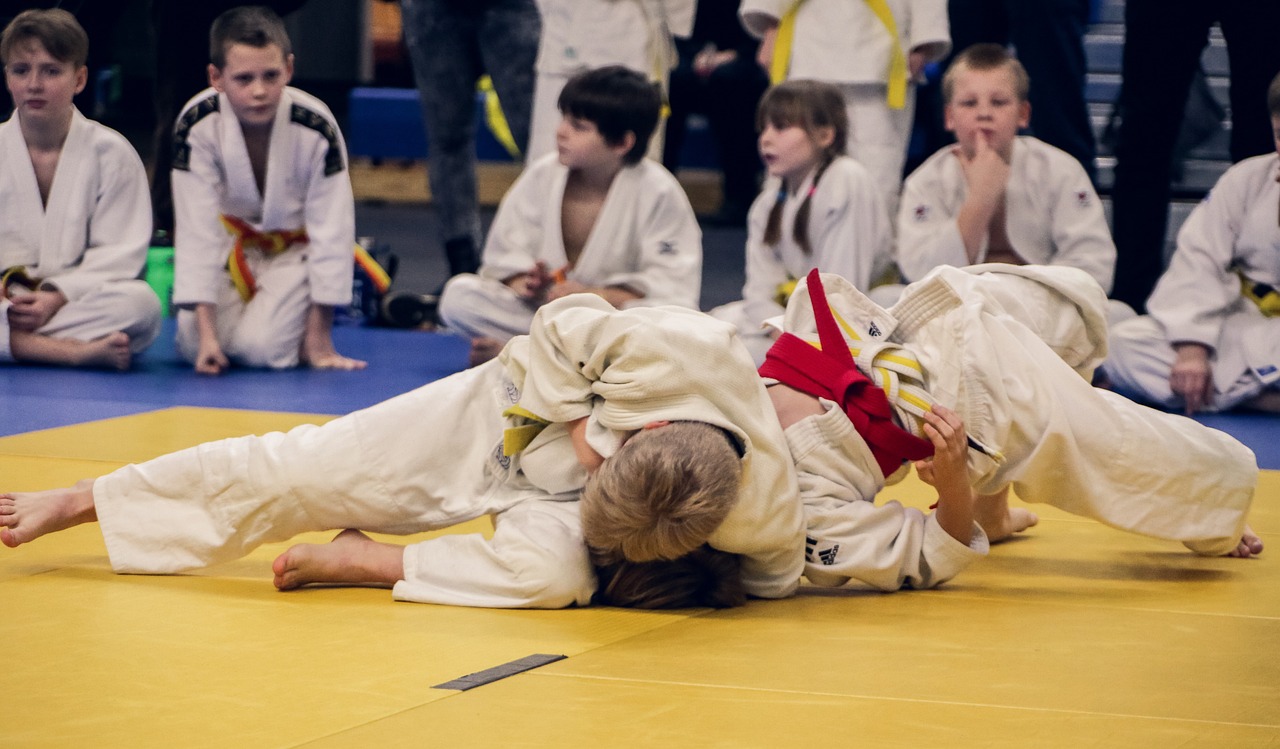
Art of Eight Limbs,
This article explores the top martial art styles that provide practical self-defense techniques, emphasizing their unique benefits, training methods, and effectiveness in real-life situations.
Krav Maga is renowned for its focus on real-world situations, teaching practitioners how to defend against various attacks quickly and efficiently. This style emphasizes instinctive movements and practical techniques.
Brazilian Jiu-Jitsu (BJJ) specializes in ground fighting and submission grappling. It empowers smaller individuals to defend against larger attackers by utilizing leverage and technique, making it an effective self-defense choice.
Understanding ground defense is crucial in self-defense scenarios. Brazilian Jiu-Jitsu teaches practitioners how to control opponents on the ground, minimizing the risk of injury and maximizing escape opportunities.
BJJ provides various techniques for escaping holds and submissions, enabling practitioners to regain control. Learning these techniques enhances confidence and self-defense effectiveness in grappling situations.
BJJ also offers strategies for defending against multiple attackers, focusing on movement and positioning to avoid being overwhelmed, which is essential for real-world confrontations.
Sparring is a fundamental aspect of Brazilian Jiu-Jitsu training, allowing practitioners to apply techniques in realistic scenarios. This practice enhances reflexes and decision-making under pressure.
Muay Thai, known as the Art of Eight Limbs, utilizes punches, kicks, elbows, and knees. Its striking techniques are effective for self-defense, providing practitioners with powerful tools for defending themselves.
Muay Thai's striking techniques are designed for effectiveness in real-life confrontations. Practitioners learn to deliver powerful strikes while maintaining balance and control, essential for self-defense.
Training in Muay Thai enhances physical conditioning and endurance, preparing practitioners for the demands of self-defense situations. This physical readiness is crucial for maintaining composure during confrontations.
The term "Art of Eight Limbs" refers to the unique striking techniques used in Muay Thai, where practitioners utilize not just their fists and feet, but also their elbows and knees. This diverse range of striking surfaces allows for a more versatile and effective approach to combat. Imagine a symphony where every instrument plays a vital role; in Muay Thai, each limb is an instrument that contributes to the harmony of self-defense.
In practical terms, this means that a Muay Thai practitioner can defend against an attacker using a variety of strikes. For example, while a jab or cross might create distance, an elbow strike can be delivered in close quarters, making it incredibly effective in a self-defense scenario. This adaptability is one of the reasons why Muay Thai is highly regarded not only as a sport but also as a practical self-defense technique.
Moreover, the training regimen in Muay Thai emphasizes not just technique but also physical conditioning. Practitioners engage in rigorous workouts that enhance their strength, speed, and agility. This conditioning is akin to preparing an athlete for a marathon; the better conditioned you are, the more resilient you become in the face of adversity.
Judo focuses on throws, joint locks, and pins, making it an effective martial art for self-defense. It teaches practitioners to use an opponent's force against them, ideal for defending against larger attackers.
Judo's throwing techniques allow practitioners to neutralize threats quickly. Learning to execute throws effectively can turn the tide in a self-defense scenario, providing an advantage over aggressors.
Judo also emphasizes joint locks and control techniques, enabling practitioners to subdue opponents without causing excessive harm, making it a practical choice for self-defense.
Karate combines striking techniques with self-discipline and mental focus. Its diverse techniques, including punches, kicks, and blocks, equip practitioners with valuable skills for self-defense in various situations.
Kata, or pre-arranged forms, play a significant role in Karate training. Practicing kata enhances muscle memory and technique precision, contributing to effective self-defense capabilities.
Karate training fosters mental discipline and focus, essential qualities for self-defense. Practitioners learn to remain calm under pressure, improving their ability to assess and respond to threats effectively.
- What is the best martial art for self-defense? It depends on personal preference, but styles like Krav Maga and Brazilian Jiu-Jitsu are often recommended for their practical applications.
- Can I learn self-defense without prior martial arts experience? Absolutely! Many martial arts schools offer beginner classes focused on self-defense techniques.
- How long does it take to become proficient in self-defense? Proficiency varies by individual, but consistent training over several months can yield significant improvements.
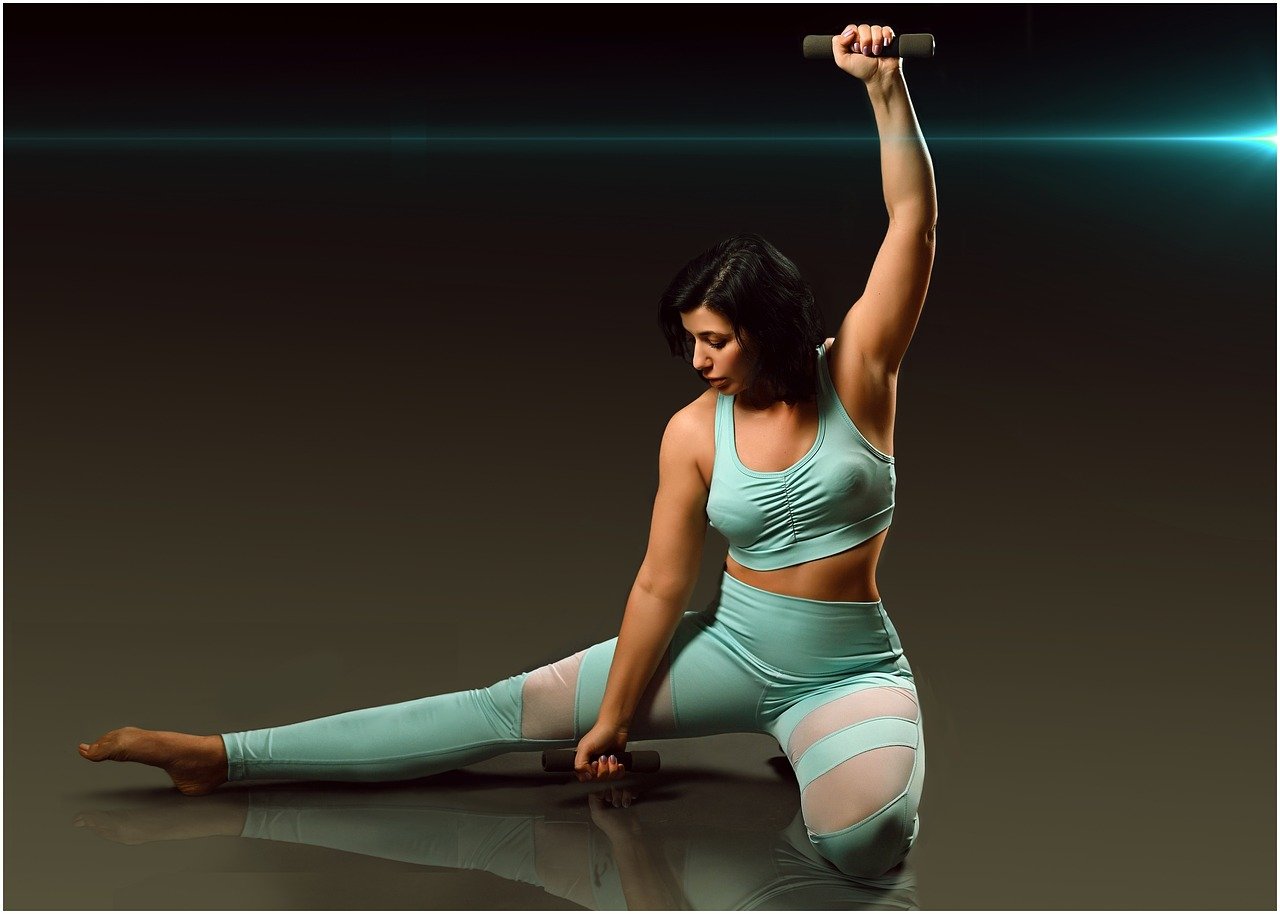
utilizes punches, kicks, elbows, and knees. Its striking techniques are effective for self-defense, providing practitioners with powerful tools for defending themselves.
This article explores the top martial art styles that provide practical self-defense techniques, emphasizing their unique benefits, training methods, and effectiveness in real-life situations.
Krav Maga is renowned for its focus on real-world situations, teaching practitioners how to defend against various attacks quickly and efficiently. This style emphasizes instinctive movements and practical techniques.
Brazilian Jiu-Jitsu (BJJ) specializes in ground fighting and submission grappling. It empowers smaller individuals to defend against larger attackers by utilizing leverage and technique, making it an effective self-defense choice.
Understanding ground defense is crucial in self-defense scenarios. Brazilian Jiu-Jitsu teaches practitioners how to control opponents on the ground, minimizing the risk of injury and maximizing escape opportunities.
BJJ provides various techniques for escaping holds and submissions, enabling practitioners to regain control. Learning these techniques enhances confidence and self-defense effectiveness in grappling situations.
BJJ also offers strategies for defending against multiple attackers, focusing on movement and positioning to avoid being overwhelmed, which is essential for real-world confrontations.
Sparring is a fundamental aspect of Brazilian Jiu-Jitsu training, allowing practitioners to apply techniques in realistic scenarios. This practice enhances reflexes and decision-making under pressure.
Muay Thai, known as the Art of Eight Limbs, utilizes punches, kicks, elbows, and knees. Its striking techniques are effective for self-defense, providing practitioners with powerful tools for defending themselves. The beauty of Muay Thai lies in its versatility; with every limb capable of delivering a strike, practitioners learn to engage in combat from various angles. This adaptability not only increases their striking options but also enhances their ability to defend against incoming attacks.
Muay Thai's striking techniques are designed for effectiveness in real-life confrontations. Practitioners learn to deliver powerful strikes while maintaining balance and control, essential for self-defense. The training often includes drills that simulate real-life scenarios, which helps to engrain these techniques into muscle memory. This preparation is crucial because, in a self-defense situation, hesitation can be detrimental.
Training in Muay Thai enhances physical conditioning and endurance, preparing practitioners for the demands of self-defense situations. This physical readiness is crucial for maintaining composure during confrontations. The rigorous training regimen not only builds strength but also develops cardiovascular fitness, allowing practitioners to sustain their energy throughout a conflict.
Judo focuses on throws, joint locks, and pins, making it an effective martial art for self-defense. It teaches practitioners to use an opponent's force against them, ideal for defending against larger attackers.
Judo's throwing techniques allow practitioners to neutralize threats quickly. Learning to execute throws effectively can turn the tide in a self-defense scenario, providing an advantage over aggressors.
Judo also emphasizes joint locks and control techniques, enabling practitioners to subdue opponents without causing excessive harm, making it a practical choice for self-defense.
Karate combines striking techniques with self-discipline and mental focus. Its diverse techniques, including punches, kicks, and blocks, equip practitioners with valuable skills for self-defense in various situations.
Kata, or pre-arranged forms, play a significant role in Karate training. Practicing kata enhances muscle memory and technique precision, contributing to effective self-defense capabilities.
Karate training fosters mental discipline and focus, essential qualities for self-defense. Practitioners learn to remain calm under pressure, improving their ability to assess and respond to threats effectively.
- What is the best martial art for self-defense?
The best martial art for self-defense often depends on individual preferences and physical abilities. Styles like Krav Maga and Brazilian Jiu-Jitsu are highly regarded for their practical applications. - Can I learn self-defense without prior martial arts experience?
Absolutely! Many self-defense classes are designed for beginners and focus on practical techniques that anyone can learn. - How long does it take to become proficient in self-defense?
Proficiency varies by individual, but consistent training over several months can significantly enhance your skills.
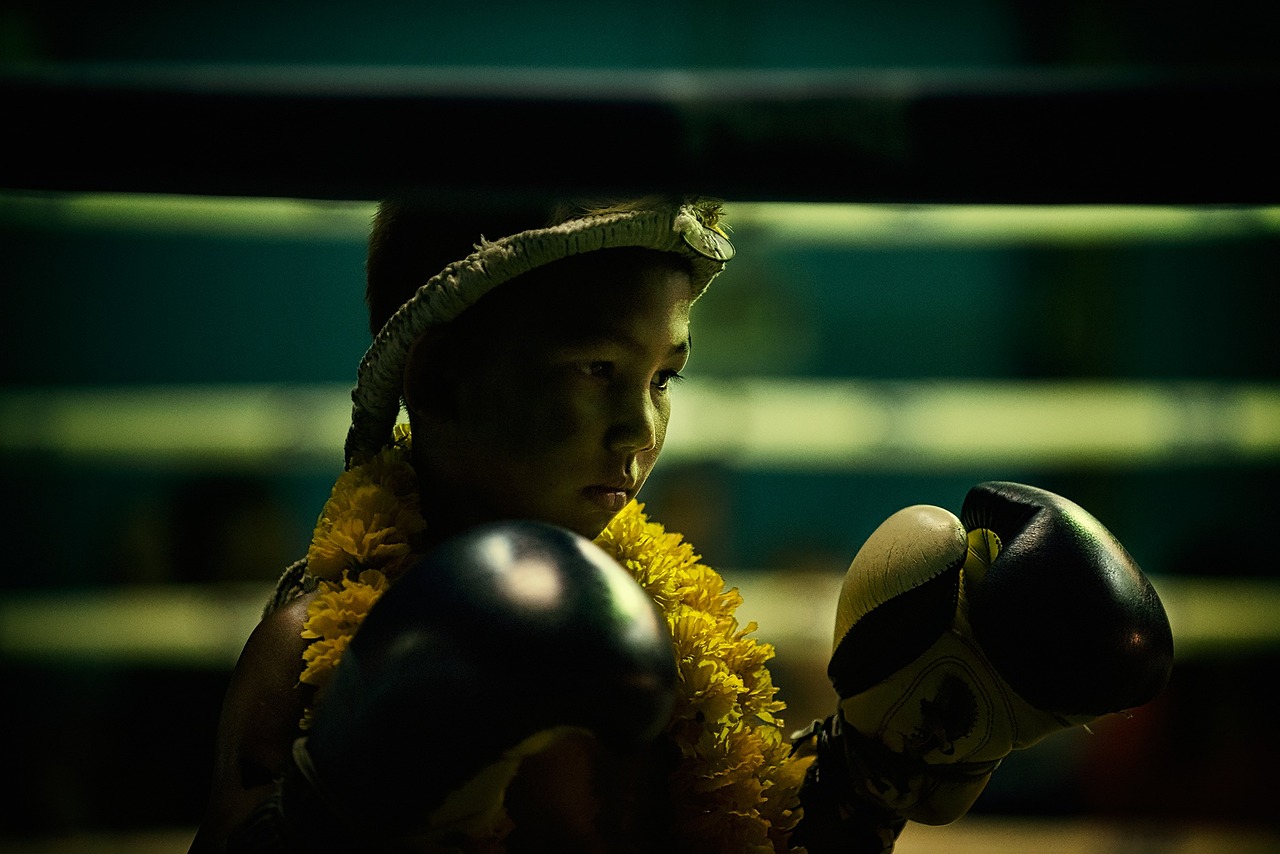
3.1. Striking Techniques for Self-Defense
When it comes to self-defense, striking techniques are your first line of defense, and Muay Thai excels in this area. Known as the Art of Eight Limbs, Muay Thai incorporates punches, kicks, elbows, and knees, effectively turning your entire body into a weapon. This multifaceted approach means that practitioners can deliver powerful strikes from various angles, making it difficult for an attacker to predict and defend against your moves. Imagine being able to strike with your fists, elbows, knees, and shins all in one fluid motion—this is the beauty of Muay Thai.
One of the key elements of Muay Thai striking is the emphasis on balance and control. Practitioners learn to maintain their stance while delivering devastating blows, ensuring that they remain stable and ready to respond to any counterattacks. This balance is crucial during a confrontation, as it allows you to move swiftly and evade incoming attacks. In self-defense situations, where split-second decisions can make all the difference, having the ability to strike while maintaining your footing can be a game changer.
Furthermore, the striking techniques taught in Muay Thai are not just about power; they are also about precision and timing. Each strike is trained to be delivered at the right moment, maximizing its impact. For instance, a well-timed elbow strike can incapacitate an attacker before they even realize what has happened. In Muay Thai training, practitioners often engage in pad work and bag drills to hone their striking skills, allowing them to practice both power and technique in a controlled environment.
Additionally, Muay Thai teaches the importance of defensive striking. This means that while you are attacking, you are also aware of your surroundings and ready to defend against incoming strikes. This dual focus is vital in real-life situations, where the chaos of an altercation can overwhelm even the most experienced fighters. By learning to strike while simultaneously defending, you not only improve your chances of success but also enhance your overall self-defense capabilities.
To illustrate the effectiveness of these striking techniques, consider the following table that highlights some common strikes used in Muay Thai:
| Technique | Description | Target Areas |
|---|---|---|
| Punch | A straight punch delivered from the guard position. | Face, Body |
| Roundhouse Kick | A powerful kick delivered to the opponent's head or body. | Legs, Body, Head |
| Elbow Strike | A close-range strike using the elbow, effective for close combat. | Face, Head |
| Knee Strike | A strike using the knee, often used in clinch situations. | Body, Head |
In summary, the striking techniques learned in Muay Thai provide a robust foundation for effective self-defense. By mastering these techniques, you equip yourself with the skills needed to protect yourself in a variety of situations. Remember, self-defense isn't just about physical strength; it's about using your body intelligently and effectively to neutralize threats. So, whether you’re facing a single attacker or multiple assailants, the striking prowess gained from Muay Thai can make all the difference.
- What is the best martial art for self-defense? While it depends on individual preferences, Muay Thai, Krav Maga, and Brazilian Jiu-Jitsu are often recommended for their practical applications in real-life scenarios.
- Do I need to be fit to start training in martial arts? Not at all! Many martial arts schools accommodate beginners of all fitness levels, and training will naturally improve your fitness over time.
- How long does it take to learn self-defense techniques? The time it takes varies based on the individual and the intensity of training, but consistent practice can yield noticeable improvements within a few months.

3.2. Conditioning and Endurance
When it comes to self-defense, having the right techniques is crucial, but equally important is your physical condition. Muay Thai training is known for its rigorous conditioning routines, which not only enhance strength but also build remarkable endurance. Imagine being in a high-pressure situation where your heart is racing, and your body is screaming for a break. If you’ve trained your body to withstand such stress, you’re more likely to stay calm and respond effectively.
In Muay Thai, conditioning involves a combination of cardiovascular training, strength building, and flexibility exercises. This multifaceted approach ensures that practitioners are not only fit but also agile and quick on their feet. For instance, the typical training session might include:
- Running or skipping rope: These activities build stamina, essential for maintaining energy during a confrontation.
- Pad work and bag drills: These enhance striking power and technique while also improving muscle endurance.
- Strength training: Exercises like push-ups, squats, and core workouts contribute to overall body strength, crucial for executing powerful strikes.
Moreover, the intensity of Muay Thai training sessions prepares you for the unpredictability of real-life situations. The more you train, the better your body adapts to fatigue. This adaptation helps you maintain focus and composure, which are vital during a self-defense encounter. Think of it like preparing for a marathon; the more miles you put in, the easier it becomes to go the distance when it counts.
Another essential aspect of conditioning in Muay Thai is the mental toughness it cultivates. As you push through grueling training sessions, you develop a mindset that can handle adversity. This mental fortitude translates directly to self-defense scenarios, where remaining calm and collected can be the difference between escape and injury.
In conclusion, the conditioning and endurance gained from Muay Thai training not only enhance physical capabilities but also foster a resilient mindset. When faced with a threat, being in peak physical shape can provide the confidence and strength needed to respond effectively. So, whether you're looking to defend yourself or just want to get fit, Muay Thai offers a comprehensive approach that prepares you for the unexpected.
- What is Muay Thai? Muay Thai is a striking martial art from Thailand, known as the "Art of Eight Limbs," utilizing punches, kicks, elbows, and knees.
- How does Muay Thai improve self-defense skills? The training emphasizes effective striking techniques, conditioning, and mental toughness, all of which are crucial for self-defense.
- Can anyone practice Muay Thai? Yes, Muay Thai is suitable for individuals of all fitness levels. Training can be tailored to accommodate different abilities and goals.
- Is Muay Thai effective against multiple attackers? While Muay Thai focuses on striking, its principles can be adapted for movement and positioning to evade or neutralize multiple threats.
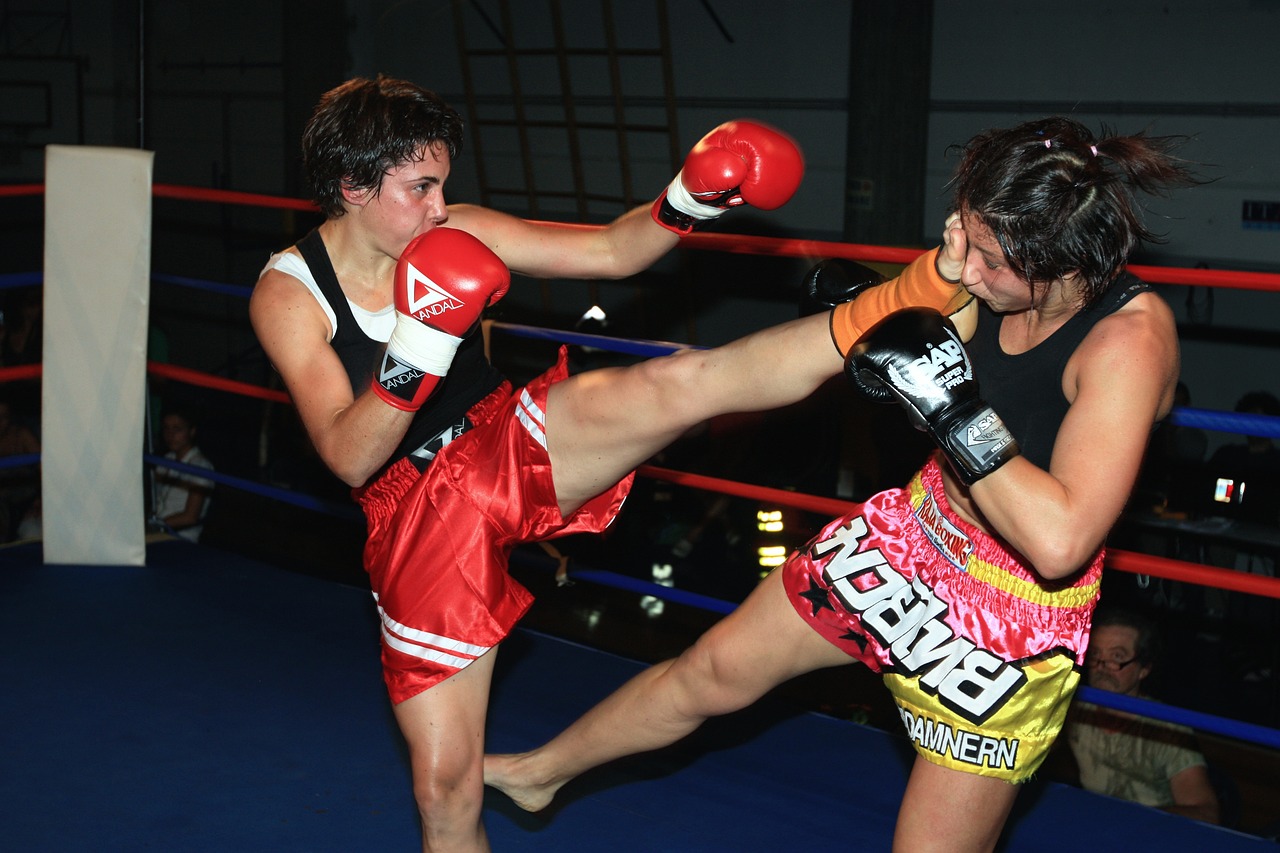
4. Judo
Judo is a fascinating martial art that focuses on using an opponent's energy against them, making it particularly effective for self-defense. With its roots in Japan, Judo emphasizes throws, joint locks, and pins, allowing practitioners to neutralize threats without relying solely on brute strength. This is especially advantageous when facing larger or stronger attackers, as it teaches individuals to leverage technique and timing over raw power.
One of the most appealing aspects of Judo is its philosophy of maximum efficiency and minimum effort. This principle not only applies to the physical techniques but also to the mental approach one takes during a confrontation. By understanding the dynamics of balance, momentum, and body positioning, a judoka can execute techniques that turn the tables on an aggressor. For instance, when someone charges at you, a well-timed throw can send them crashing to the ground, effectively neutralizing the threat.
The throwing techniques in Judo are diverse and can be adapted to various situations. Here are some key techniques:
- O Goshi: A hip throw that uses the opponent's momentum to flip them over your hip.
- Seoi Nage: A shoulder throw that involves pulling the opponent over your shoulder while maintaining control.
- Uchi Mata: An inner thigh throw that leverages your leg to lift and throw the opponent off balance.
Mastering these techniques not only provides practical self-defense skills but also builds confidence in one's ability to handle confrontations. The beauty of Judo lies in its adaptability; with practice, even a novice can learn to throw an opponent effectively, making it a powerful tool in any self-defense arsenal.
In addition to throws, Judo also incorporates joint locks and control techniques, which are crucial for subduing an opponent without causing excessive harm. These techniques allow practitioners to immobilize an attacker, providing a safe way to end a confrontation. For example, the armbar and wrist lock are commonly taught in Judo classes, enabling individuals to control an opponent's movements while minimizing the risk of injury.
Furthermore, Judo training emphasizes the importance of balance and control. Practitioners learn to maintain their own balance while executing techniques, which is vital during a real-life confrontation. The ability to remain composed and centered allows individuals to respond effectively to unexpected situations. This mental discipline, combined with physical skill, makes Judo an exceptional choice for self-defense.
Overall, Judo not only equips individuals with practical techniques for self-defense but also instills a sense of confidence and composure. Whether you're looking to defend yourself or simply want to engage in a rewarding physical activity, Judo offers a comprehensive approach that goes beyond mere combat skills.
Q: Is Judo suitable for all ages?
A: Yes, Judo can be practiced by individuals of all ages, from children to seniors. Many dojos offer classes tailored to different age groups and skill levels.
Q: Do I need to be physically fit to start Judo?
A: No prior fitness level is required to start Judo. The training itself will improve your physical condition over time.
Q: Can Judo be used for self-defense in real-life situations?
A: Absolutely! The techniques learned in Judo are practical and effective for self-defense, especially when dealing with larger opponents.
Q: How long does it take to become proficient in Judo?
A: Proficiency varies among individuals, but with regular practice, many people can become competent in a few months. Mastery takes years of dedicated training.
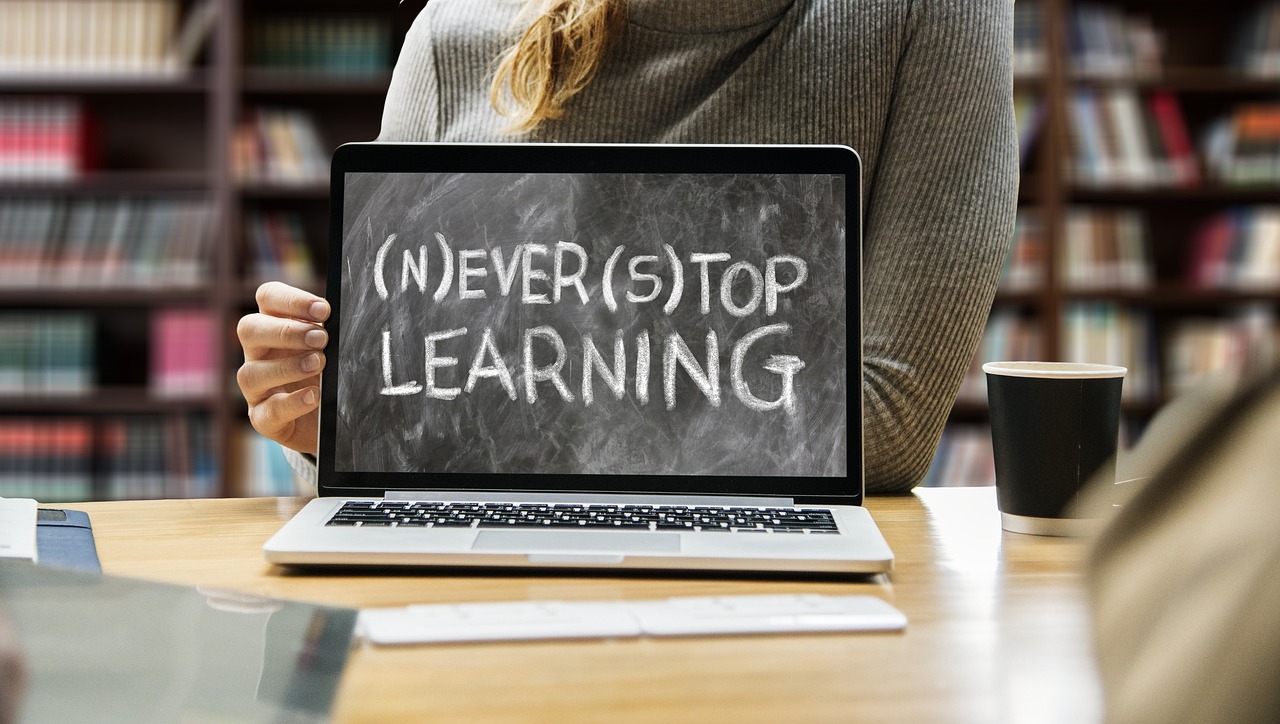
4.1. Techniques for Throwing Opponents
When it comes to self-defense, understanding how to throw an opponent can be a game-changer. Judo, often referred to as "the gentle way," is built on the principle of using an opponent's weight and momentum against them. This means that even if you're facing someone larger and stronger, you can still find ways to neutralize the threat. One of the most fundamental techniques in Judo is the hip throw, known as "O Goshi." This technique involves leveraging your hips to lift and throw your opponent, making it particularly effective in close-range confrontations.
Another essential technique is the shoulder throw, or "Ippon Seoi Nage." This involves turning your back to your opponent, dropping your weight, and using your shoulder to propel them over you. It’s all about timing and positioning, and once mastered, it can be executed swiftly and efficiently.
Additionally, the foot sweep, or "De Ashi Barai," is a technique that allows you to trip your opponent while maintaining your balance. This is not only effective for throwing someone to the ground but also for creating openings to escape or follow up with other techniques.
To give you a clearer picture of these techniques, here’s a brief comparison table highlighting the key aspects of each throwing technique:
| Technique | Description | Key Benefit |
|---|---|---|
| Hip Throw (O Goshi) | Utilizes your hips to lift and throw the opponent. | Effective against larger opponents. |
| Shoulder Throw (Ippon Seoi Nage) | Involves turning your back and using your shoulder for leverage. | Quick execution and control. |
| Foot Sweep (De Ashi Barai) | Trips the opponent while maintaining your balance. | Creates openings for escape or follow-up techniques. |
Mastering these techniques requires practice and understanding of body mechanics. It’s not just about brute strength; it's about finesse, timing, and strategy. In a self-defense scenario, being able to throw an opponent can give you the upper hand, allowing you to escape or gain control of the situation. As you train in Judo, you'll find that these techniques not only enhance your physical capabilities but also boost your confidence in handling confrontations effectively.
- How long does it take to learn throwing techniques in Judo?
While mastering Judo takes time, you can start learning basic throwing techniques within a few weeks of consistent practice.
- Can anyone practice Judo regardless of fitness level?
Yes! Judo is designed to be accessible to people of all fitness levels, and training can be adapted to fit individual needs.
- Is Judo effective for self-defense?
Absolutely! Judo techniques are practical for self-defense, especially in situations where you need to neutralize a larger opponent quickly.
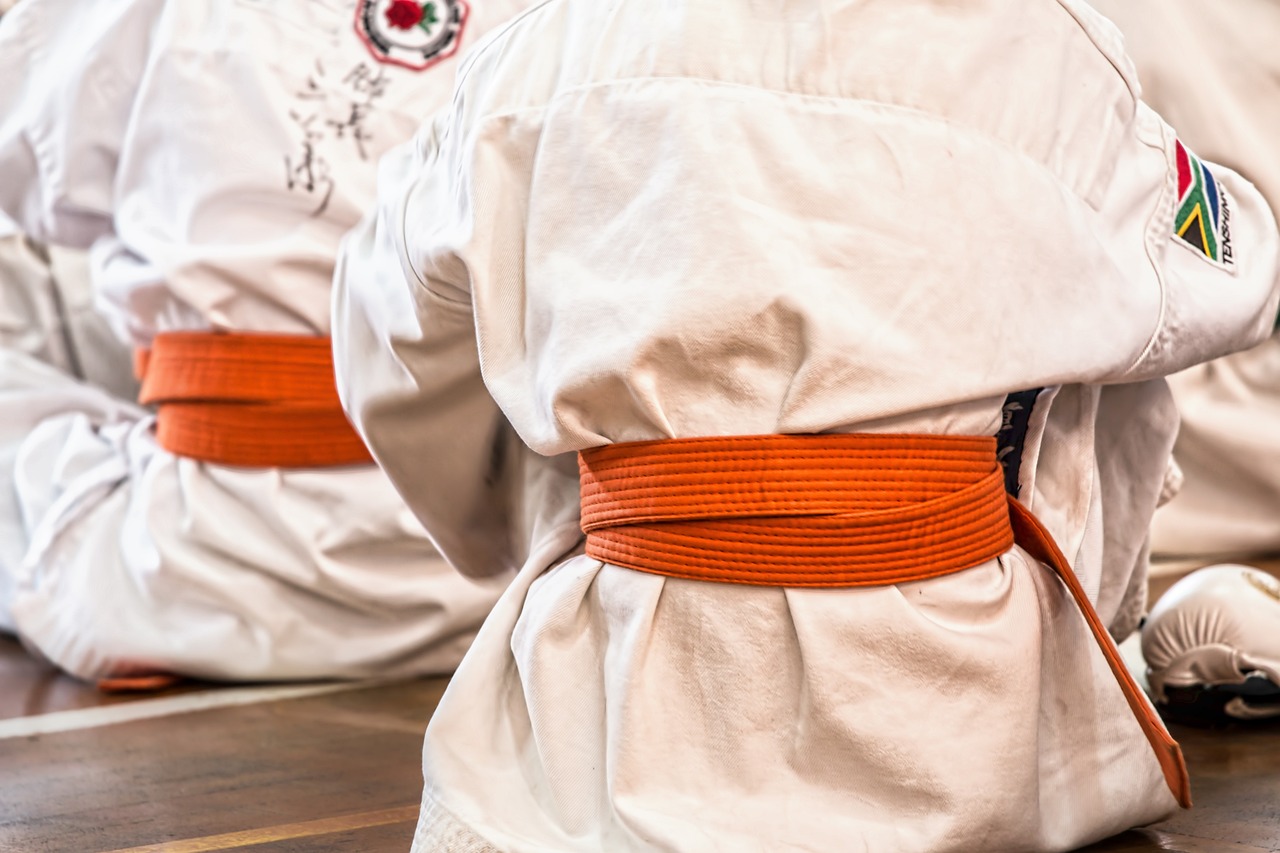
4.2. Joint Locks and Control
Joint locks and control techniques are fundamental components of Judo that not only enhance a practitioner's ability to defend themselves but also minimize harm to the aggressor. The beauty of these techniques lies in their simplicity and effectiveness; they allow a smaller individual to control a larger opponent by manipulating their joints. Imagine using a lever to lift a heavy object; joint locks operate on a similar principle, where leverage and body positioning play crucial roles.
When executed correctly, joint locks can incapacitate an attacker, providing the defender with the opportunity to escape or neutralize the threat. The key is understanding the mechanics of the joints involved and applying pressure in a way that restricts movement without causing unnecessary injury. This approach not only aligns with the principles of self-defense but also reflects a deeper respect for martial arts philosophy, where the goal is to protect oneself while minimizing harm to others.
Some common joint lock techniques include:
- Arm Locks: These involve manipulating the opponent's arm to create leverage, often leading to a submission or a controlled position.
- Wrist Locks: By applying pressure to the wrist joint, a practitioner can effectively control an opponent's movements, making it difficult for them to strike or escape.
- Leg Locks: These techniques target the knee or ankle, allowing the defender to immobilize the attacker and gain the upper hand.
Moreover, the application of joint locks in real-life situations can significantly enhance a practitioner's confidence. Knowing that they possess the skills to control an aggressor provides a psychological edge, allowing them to remain calm and composed under pressure. This mental fortitude is just as important as physical technique in self-defense scenarios.
In conclusion, mastering joint locks and control techniques in Judo not only equips practitioners with effective self-defense skills but also fosters a sense of responsibility and ethical conduct. As you train in Judo, remember that the aim is not just to defeat an opponent but to do so with respect and integrity.
1. What are joint locks in Judo?
Joint locks are techniques used to control an opponent by applying pressure to their joints, making it difficult for them to move or escape.
2. Are joint locks safe to practice?
Yes, when practiced under proper supervision and with respect for the partner's safety, joint locks can be a safe and effective part of martial arts training.
3. Can joint locks be used in self-defense?
Absolutely! Joint locks can provide a practical means of controlling an attacker, allowing the defender to escape or neutralize the threat.
4. Do I need to be strong to perform joint locks?
Not necessarily. Joint locks rely more on technique and leverage than on brute strength, making them effective for practitioners of all sizes.
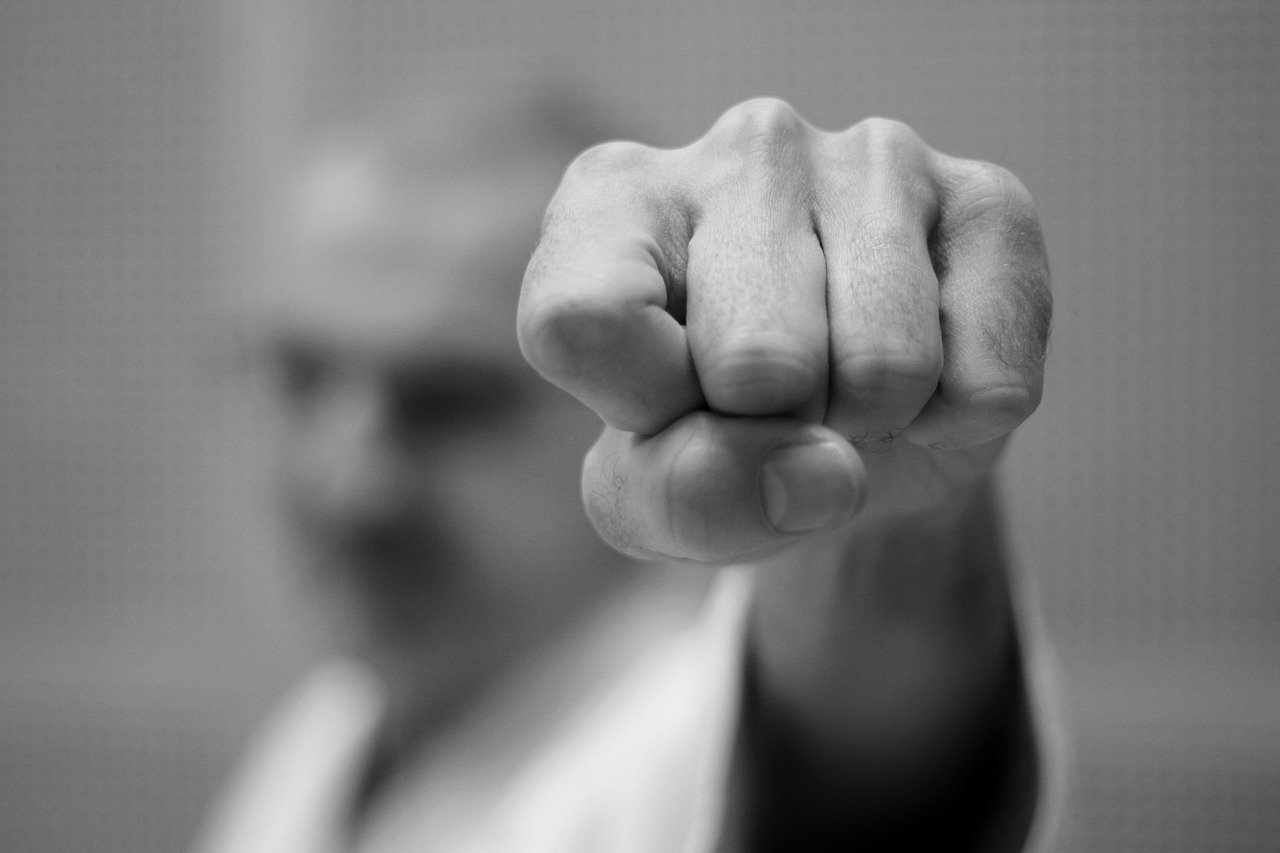
5. Karate
Karate is not just a martial art; it’s a philosophy that combines striking techniques with self-discipline and mental focus. This dynamic art form equips practitioners with a diverse arsenal of skills, including powerful punches, precise kicks, and effective blocks. These techniques are not only about physical prowess; they also emphasize the importance of mental fortitude. Imagine standing your ground against an aggressor, not just relying on your fists, but also on a calm mind and strategic thinking. That’s the essence of Karate.
One of the most significant aspects of Karate training is the practice of kata. Kata consists of pre-arranged forms that simulate combat scenarios, allowing practitioners to refine their techniques and enhance their muscle memory. Each kata is like a dance, a carefully choreographed sequence that helps build timing, precision, and rhythm. Through repeated practice, students develop a deeper understanding of movement and technique, which is crucial for effective self-defense. When faced with a real threat, the reflexes honed through kata can make a world of difference.
Moreover, the mental discipline fostered through Karate training is invaluable. Practitioners learn to focus their thoughts, control their emotions, and remain calm under pressure. This mental clarity is essential when assessing a situation and deciding how to respond effectively. It’s akin to being a chess player; the ability to anticipate moves and think several steps ahead can be the difference between safety and danger. In self-defense situations, this focus can help practitioners stay composed, allowing them to react appropriately rather than panic.
In addition to physical and mental training, Karate promotes a strong sense of community and respect. Students often train in groups, fostering camaraderie and mutual support. This environment not only enhances learning but also instills a sense of responsibility towards oneself and others. The values of respect, humility, and perseverance are deeply ingrained in Karate, making it a holistic approach to personal development.
Overall, Karate stands out as a versatile martial art that prepares individuals for various self-defense scenarios. Its combination of striking techniques, mental discipline, and community spirit makes it an excellent choice for anyone looking to enhance their self-defense skills. Whether you are defending yourself against a physical threat or navigating the challenges of everyday life, the lessons learned in Karate can empower you to face any situation with confidence.
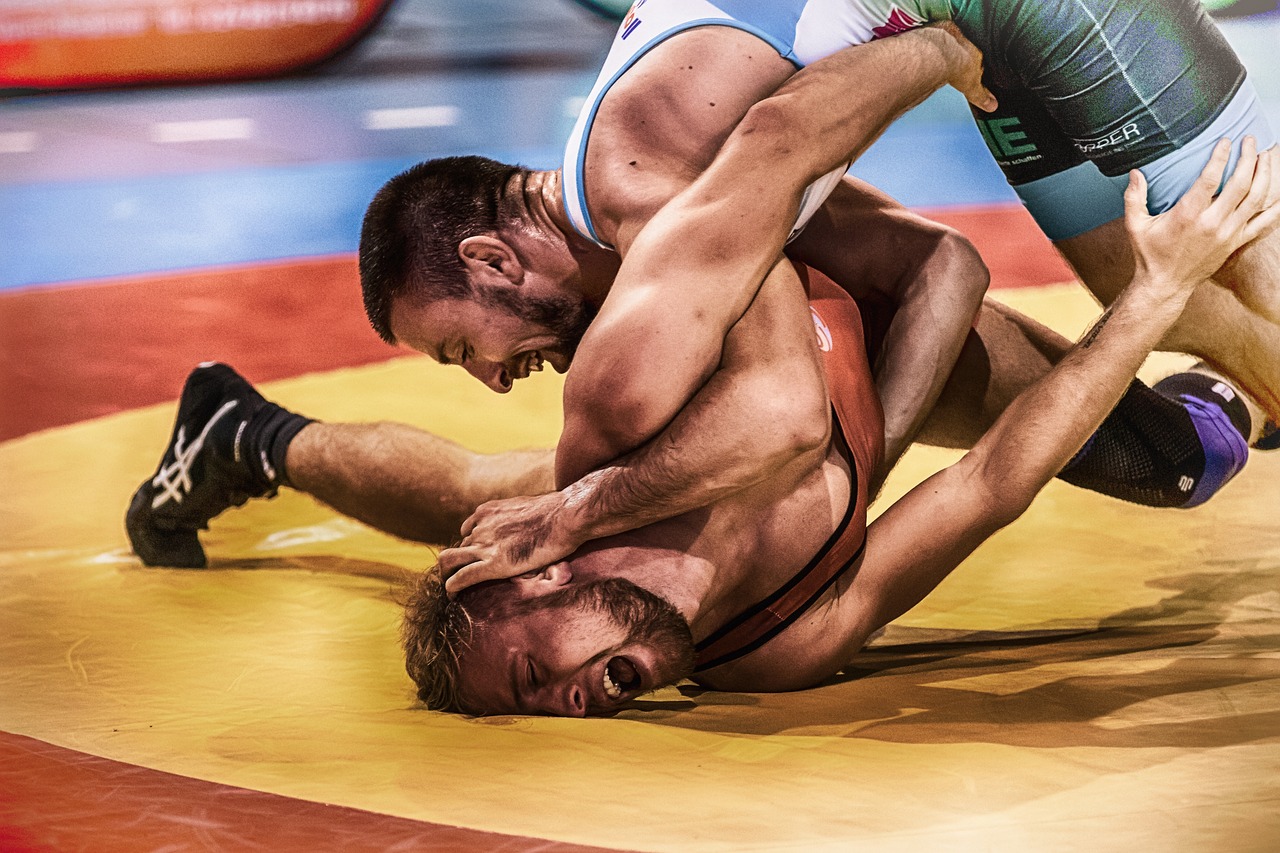
5.1. The Importance of Kata
Kata, which translates to "form" in Japanese, is a fundamental component of Karate training that cannot be overlooked. Think of kata as a dance of martial arts; it is a choreographed sequence of movements that teaches practitioners how to execute techniques with precision and fluidity. Engaging in kata practice is not just about memorizing movements—it's about internalizing the principles behind each technique. This practice allows martial artists to develop muscle memory, which is crucial for effective self-defense.
When you practice kata, you are essentially rehearsing a variety of scenarios and responses to potential attacks. This repetitive training helps to solidify your understanding of distance, timing, and the mechanics of strikes and blocks. In a high-pressure situation, the ability to recall these movements instinctively can make all the difference. The importance of kata can be summarized in several key benefits:
- Muscle Memory: Regular practice of kata builds muscle memory, enabling quick and efficient responses during real-life confrontations.
- Technique Precision: Kata emphasizes the importance of executing techniques correctly, which is vital for effective self-defense.
- Mental Focus: Practicing kata fosters mental discipline, helping practitioners maintain composure and clarity under pressure.
- Understanding Movement: Kata teaches practitioners how to move fluidly and effectively, enhancing overall martial arts proficiency.
Moreover, kata serves as a bridge between the physical and mental aspects of martial arts. It encourages practitioners to visualize their opponents and anticipate their movements, sharpening their overall combat awareness. This mental engagement is essential for developing strategic thinking and adaptability in self-defense situations. In essence, kata is not merely a series of movements; it is a comprehensive training tool that prepares martial artists for the unpredictability of real-world confrontations.
In conclusion, the importance of kata in Karate training cannot be overstated. It is an invaluable practice that enhances physical skills, mental acuity, and self-defense readiness. By dedicating time to kata, practitioners not only improve their techniques but also cultivate a deeper understanding of the art of Karate itself.
- What is the purpose of kata in Karate? Kata serves to teach practitioners the principles of movement, enhance muscle memory, and improve technique precision for effective self-defense.
- How often should I practice kata? Regular practice is recommended, ideally several times a week, to maintain and improve your skills.
- Can kata help in real-life self-defense situations? Yes, kata prepares practitioners to respond instinctively and effectively to various attacks, making it a valuable part of self-defense training.
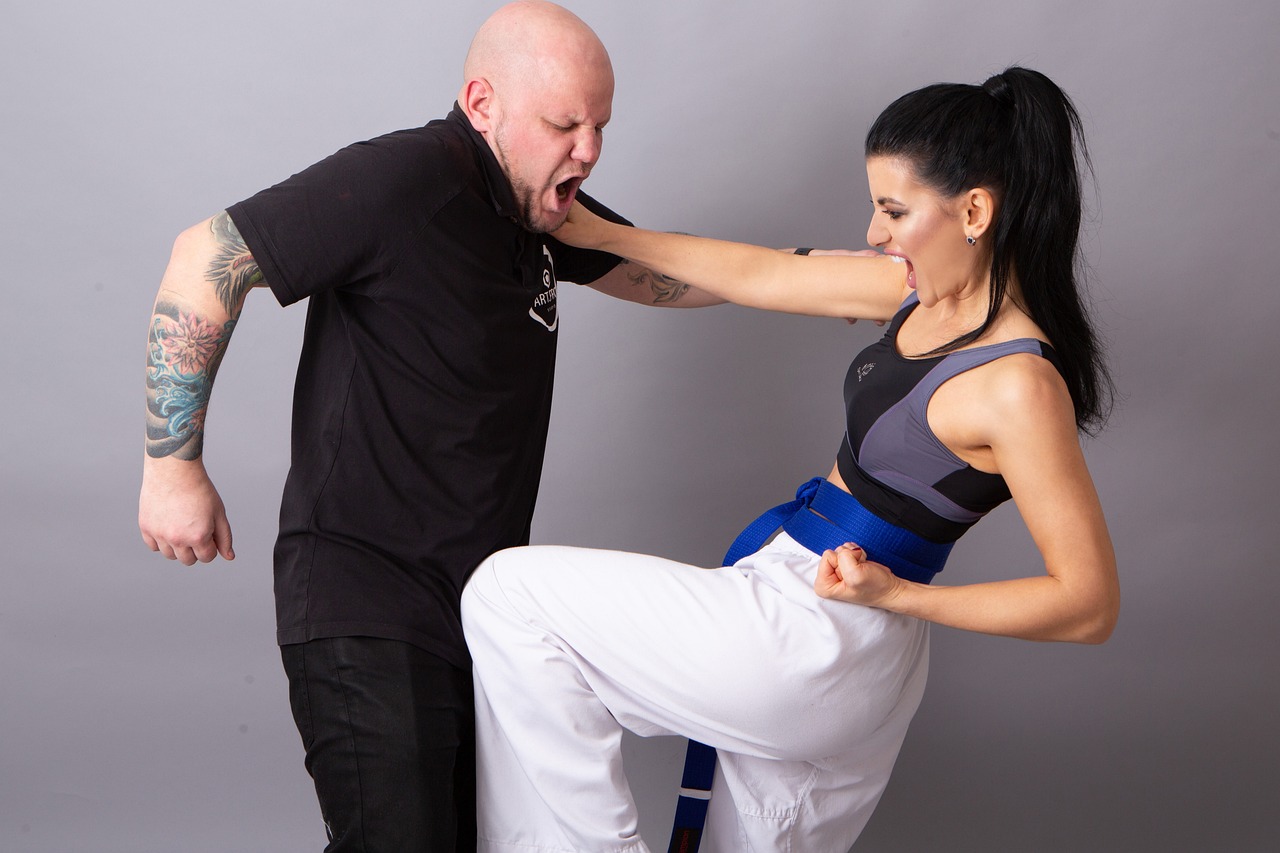
5.2. Mental Discipline and Focus
This article explores the top martial art styles that provide practical self-defense techniques, emphasizing their unique benefits, training methods, and effectiveness in real-life situations.
Krav Maga is renowned for its focus on real-world situations, teaching practitioners how to defend against various attacks quickly and efficiently. This style emphasizes instinctive movements and practical techniques.
Brazilian Jiu-Jitsu (BJJ) specializes in ground fighting and submission grappling. It empowers smaller individuals to defend against larger attackers by utilizing leverage and technique, making it an effective self-defense choice.
Understanding ground defense is crucial in self-defense scenarios. Brazilian Jiu-Jitsu teaches practitioners how to control opponents on the ground, minimizing the risk of injury and maximizing escape opportunities.
BJJ provides various techniques for escaping holds and submissions, enabling practitioners to regain control. Learning these techniques enhances confidence and self-defense effectiveness in grappling situations.
BJJ also offers strategies for defending against multiple attackers, focusing on movement and positioning to avoid being overwhelmed, which is essential for real-world confrontations.
Sparring is a fundamental aspect of Brazilian Jiu-Jitsu training, allowing practitioners to apply techniques in realistic scenarios. This practice enhances reflexes and decision-making under pressure.
Muay Thai, known as the Art of Eight Limbs, utilizes punches, kicks, elbows, and knees. Its striking techniques are effective for self-defense, providing practitioners with powerful tools for defending themselves.
Muay Thai's striking techniques are designed for effectiveness in real-life confrontations. Practitioners learn to deliver powerful strikes while maintaining balance and control, essential for self-defense.
Training in Muay Thai enhances physical conditioning and endurance, preparing practitioners for the demands of self-defense situations. This physical readiness is crucial for maintaining composure during confrontations.
Judo focuses on throws, joint locks, and pins, making it an effective martial art for self-defense. It teaches practitioners to use an opponent's force against them, ideal for defending against larger attackers.
Judo's throwing techniques allow practitioners to neutralize threats quickly. Learning to execute throws effectively can turn the tide in a self-defense scenario, providing an advantage over aggressors.
Judo also emphasizes joint locks and control techniques, enabling practitioners to subdue opponents without causing excessive harm, making it a practical choice for self-defense.
Karate combines striking techniques with self-discipline and mental focus. Its diverse techniques, including punches, kicks, and blocks, equip practitioners with valuable skills for self-defense in various situations.
Kata, or pre-arranged forms, play a significant role in Karate training. Practicing kata enhances muscle memory and technique precision, contributing to effective self-defense capabilities.
Mental discipline and focus are cornerstones of effective self-defense training in Karate. This martial art not only hones physical skills but also cultivates a sharp mental acuity that is essential during confrontations. Imagine being in a high-pressure situation where your heart is racing, and your mind is clouded with fear. Without the ability to stay focused, your chances of successfully defending yourself diminish significantly.
Karate practitioners engage in various mental exercises that enhance their concentration and decision-making abilities. Training often includes:
- Visualization Techniques: Enabling practitioners to mentally rehearse scenarios, preparing them for real-life encounters.
- Breathing Exercises: Helping to calm the mind and body, allowing for clearer thinking during stressful situations.
- Mindfulness Practices: Encouraging awareness of surroundings and the ability to react appropriately to threats.
By developing these mental skills, Karate students learn to maintain a calm demeanor even when faced with aggression. This mental fortitude not only aids in self-defense but also translates into other areas of life, fostering resilience and focus in everyday challenges.
Q1: What is the best martial art for self-defense?
A: It depends on individual preferences and physical abilities. Styles like Krav Maga, Brazilian Jiu-Jitsu, and Muay Thai are often recommended for their practical applications in self-defense.
Q2: Do I need to be fit to start martial arts training?
A: No, martial arts can be adapted to suit all fitness levels. Beginners are encouraged to start at their own pace and gradually improve their fitness.
Q3: How long does it take to become proficient in self-defense?
A: Proficiency varies by individual, but consistent practice and training can lead to noticeable improvements within a few months.
Q4: Can women benefit from martial arts training?
A: Absolutely! Martial arts empower women with self-defense skills, confidence, and physical fitness.
Frequently Asked Questions
- What is Krav Maga, and why is it effective for self-defense?
Krav Maga is a martial art that focuses on real-world scenarios, teaching quick and efficient defense techniques against various attacks. Its emphasis on instinctive movements makes it particularly effective for self-defense, allowing practitioners to react swiftly in high-pressure situations.
- How does Brazilian Jiu-Jitsu help in self-defense against larger opponents?
Brazilian Jiu-Jitsu (BJJ) empowers smaller individuals by utilizing leverage and technique rather than brute strength. This makes it an excellent choice for self-defense, as it teaches practitioners how to control and submit larger attackers through ground fighting and grappling techniques.
- What are the key benefits of training in Muay Thai for self-defense?
Training in Muay Thai enhances striking skills using punches, kicks, elbows, and knees, providing powerful tools for self-defense. Additionally, it improves physical conditioning and endurance, which are crucial for maintaining composure and effectiveness during confrontations.
- Can Judo techniques be used in real-life self-defense situations?
Absolutely! Judo focuses on throws and joint locks, allowing practitioners to use an opponent's force against them. This makes it an effective martial art for self-defense, especially against larger aggressors, as it enables quick neutralization of threats.
- What role does mental discipline play in Karate training?
Mental discipline is a cornerstone of Karate training. Practitioners learn to stay calm under pressure, enhancing their ability to assess and respond to threats effectively. This mental focus, combined with physical techniques, equips them with valuable skills for self-defense.
- Is sparring important in Brazilian Jiu-Jitsu?
Yes! Sparring is a fundamental aspect of Brazilian Jiu-Jitsu. It allows practitioners to apply techniques in realistic scenarios, improving their reflexes and decision-making skills under pressure, which is essential for effective self-defense.
- How does Muay Thai training improve physical fitness?
Muay Thai training is rigorous and enhances overall physical conditioning, including strength, agility, and endurance. This fitness not only prepares practitioners for self-defense situations but also contributes to their overall health and well-being.



















